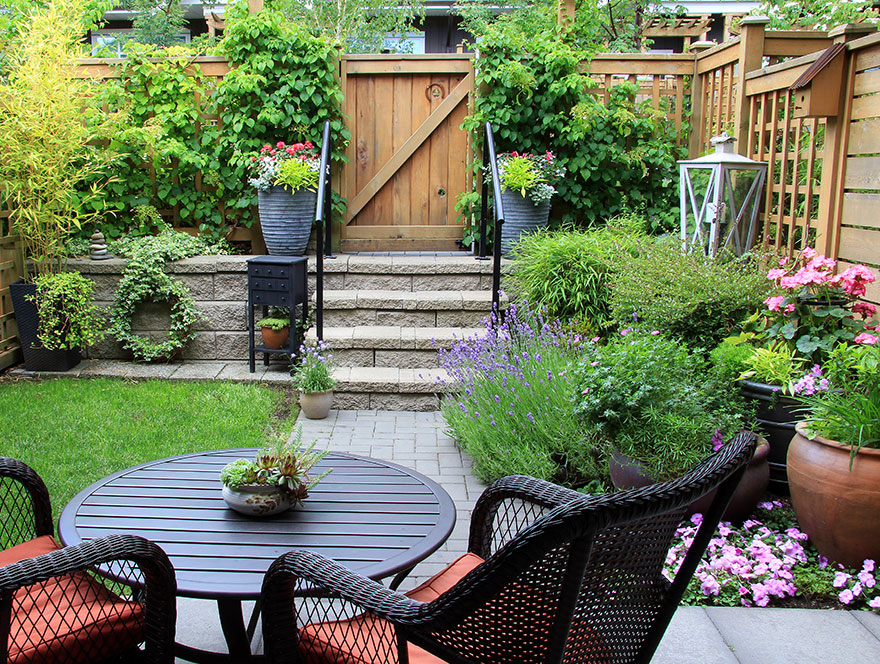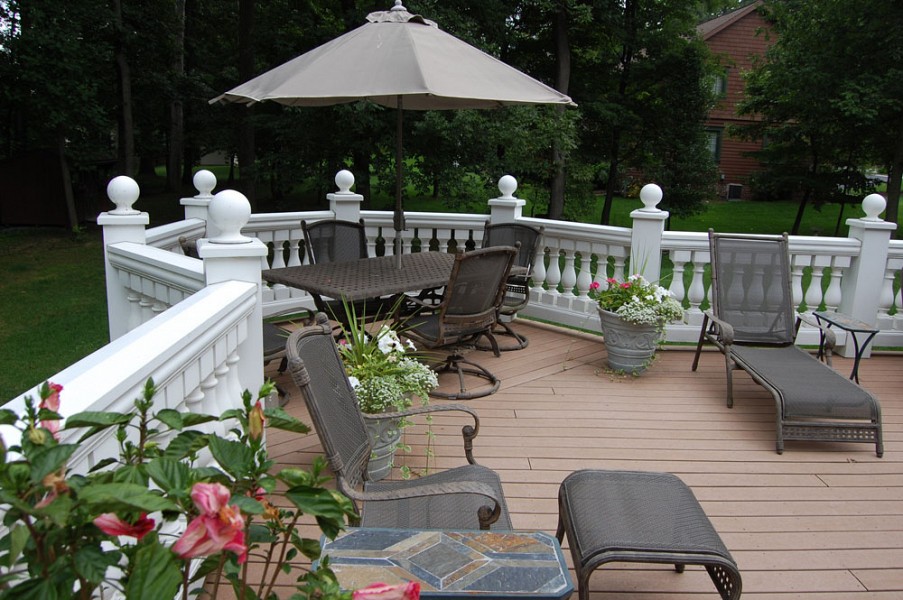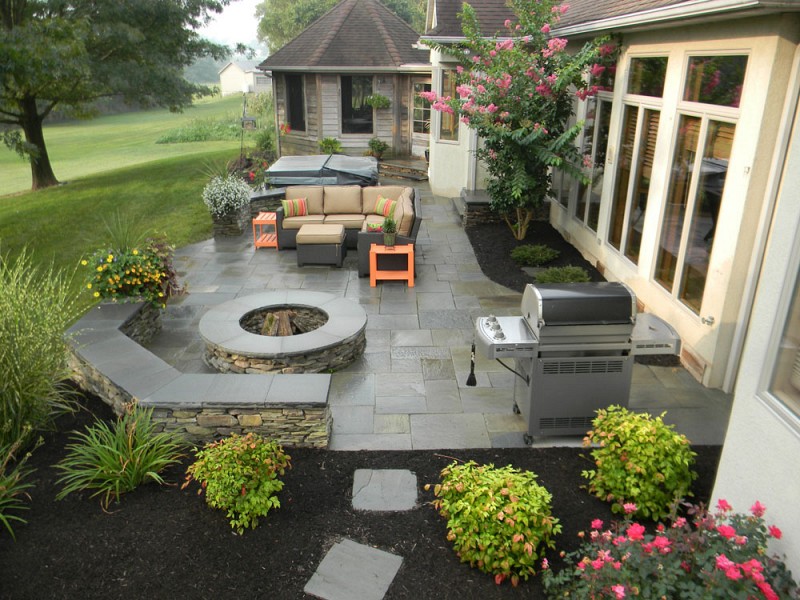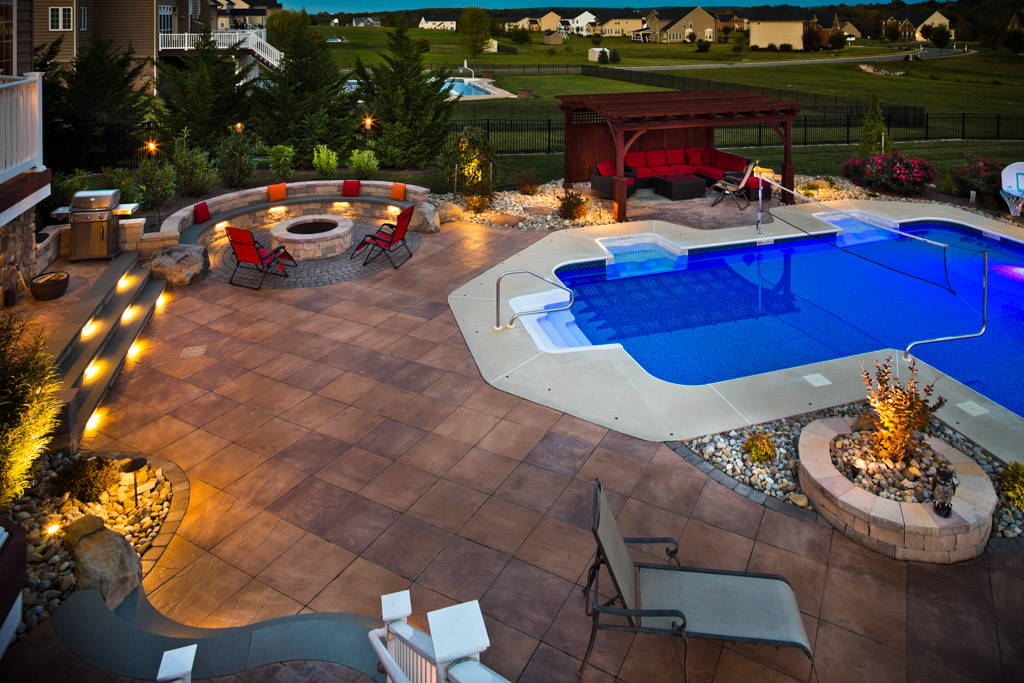Category: Outdoor Patios

Container Gardening Tips
July 18, 2017Container gardening isn’t just for the urban landscape, or those of us with attention deficit issues. Containers and planters are a great way to add POP to your landscape and create visual focal points that might be hard to achieve with traditional landscape techniques. Planters can also be used to rotate seasonal flowers and decorations, even in the cold winter months.
Don’t be fooled, however, while container gardening can be easier than traditional landscaping, it does not guarantee success. Follow our tips for the best results.
Choosing the Right Planters
When it comes to selecting containers, the sheer volume of available styles and sizes can be overwhelming. However, there are some basic qualities you should look for in every container or planter you choose.
Look for containers that allow ample drainage and are made from non-porous materials. This will help you with keeping your plants watered, but not flooded.
The best containers will be flat-sided or wider at the top. If you are planning on planting annuals, you will want a container that is at least 8 inches deep. Grasses and shrubs will need more room, between 16 and 24 inches deep. If you are looking to add a variety of plants within one container, be sure that it is at least 12 inches wide.
Prepping Your Container
Before filling your planters with soil, be sure to add some stones to the bottom, particularly over the drainage holes. This will help maintain moisture.
We recommend bagged potting soil for flowering annuals. This will help prevent disease, while keeping your planter lightweight. Be sure to select a potting soil that contains a slow-release fertilizer to help your plants to stay healthy longer.
Choosing Your Plants
When selecting plant material, be sure to choose plants that are still fairly small. Smaller plants are easier to install and larger, more mature plants may be root bound in the original container, which will cause them to lose moisture more quickly. Properly planted and fertilized material will quickly fill in and make your container(s) look great!
Use bold colors, or variations of the same color, to design eye-catching displays. Do not be afraid to mix textures. The best arrangements use a variety of heights within the same planter. For example, choose tall plants like sedge grasses for the center or back of the planter, add medium height plants like begonias to the middle, and hanging or trailing plants such ipomoea around the outer edges of the planter. This will add visual interest to your container garden.
If you plan on adding a variety of plants to one container, choose plants that will grow harmoniously together, meaning that they match as far as watering and sunlight needs.
Maintaining Your Container Garden
If you plan on switching out plants based on season, consider using smaller pots within larger containers. This will make removing and replacing plants easier- when the season changes simply lift out the old and drop in the new!
Be sure to water your potted plants often and to place them where they will receive appropriate sunlight.
For flowering plants, be sure to trim off any dead blossoms to make room for new flowers.
Need Inspiration?
If you are looking for a professional design for your porch, patio or landscape with a container garden, talk to Hively. Our specialists will select the right plants, planters and accessories for your home, and we can maintain your plants, ensuring that they stay beautiful all season long.

Winterizing Your Deck, Patio and Other Outdoor Spaces
December 12, 2016As the recent burst of cold fall weather has reminded us, winter is just around the corner. With the Thanksgiving holiday over, it’s time to winterize your deck, patio and other outdoor living spaces before the weekends get any colder! Here is a short list of things to do, compiled by our staff, to prepare your landscape and outdoor areas for the colder months ahead.
If you have outdoor furniture, cover it or store it inside a garage or shed. This can help preserve the appearance of your furniture, and in the case of wooden or stone material, may protect it from serious damage caused by freeze/thaw cycles. If you don’t have a grill cover, invest in one! We’ve been using the same grill at our office for over 12 years, and it still looks and works great because we cover it every day.
Many of us have power equipment with small engines such as lawn mowers, chainsaws, string trimmers, and leaf blowers that are put away in the shed and forgotten about after the last use. It’s common for the latter three to have two-stroke engines that use a fuel-oil mixture. With those, be sure to top off the tank. The oil in the mix will help stabilize the fuel over the winter months.

Patio Paver versus A Stamped Concrete Patio – Which is Better For Me?
February 12, 2016Potential and current customers frequently ask us if they should choose patio pavers or a stamped concrete patio. There’s no simple answer because every homeowner has different desires and expectations, so we begin to help them choose by explaining the significant differences between these two materials. Let’s clarify that “pavers” is a generic term for interlocking concrete pavers. Patio pavers are manmade from high-strength concrete and come in an almost infinite variety of shapes, thicknesses, textures and colors. We use pavers frequently, and we also construct many hardscapes from natural stone materials, using similar installation techniques.
Costs
Let’s get right to it; many people assume that a stamped concrete patio will be less expensive than a paver patio. In some cases, they will be right but since no two design/installations are the same, it’s not really possible to make this judgment without some research. It’s also not really an apples-to-apples comparison, as we will explain.
Construction
The most important part of any patio installation, regardless of material type, is the base. This is the foundation of the final surface and as the saying goes, what you see is “only as strong as its foundation”.

The Secrets to Building a Great Fire Pit
October 29, 2015With the fall ushering in cooler weather, many people are looking for ways to enjoy the outdoors as long as they possibly can. A fire pit is a solution to this problem, but you’ll want to make sure you aren’t setting yourself up for a headache later due to poor planning or installation mistakes.
Our experience has taught us several secrets to fire pit building that most people overlook. We wanted to share these secrets with you if you are considering adding a fire pit to your backyard living space.
- You’ll need to determine what regulations local municipalities have enacted in regards to fire pits in your area. You don’t want to go through the trouble of building a fire pit only to be forced to remove it later.